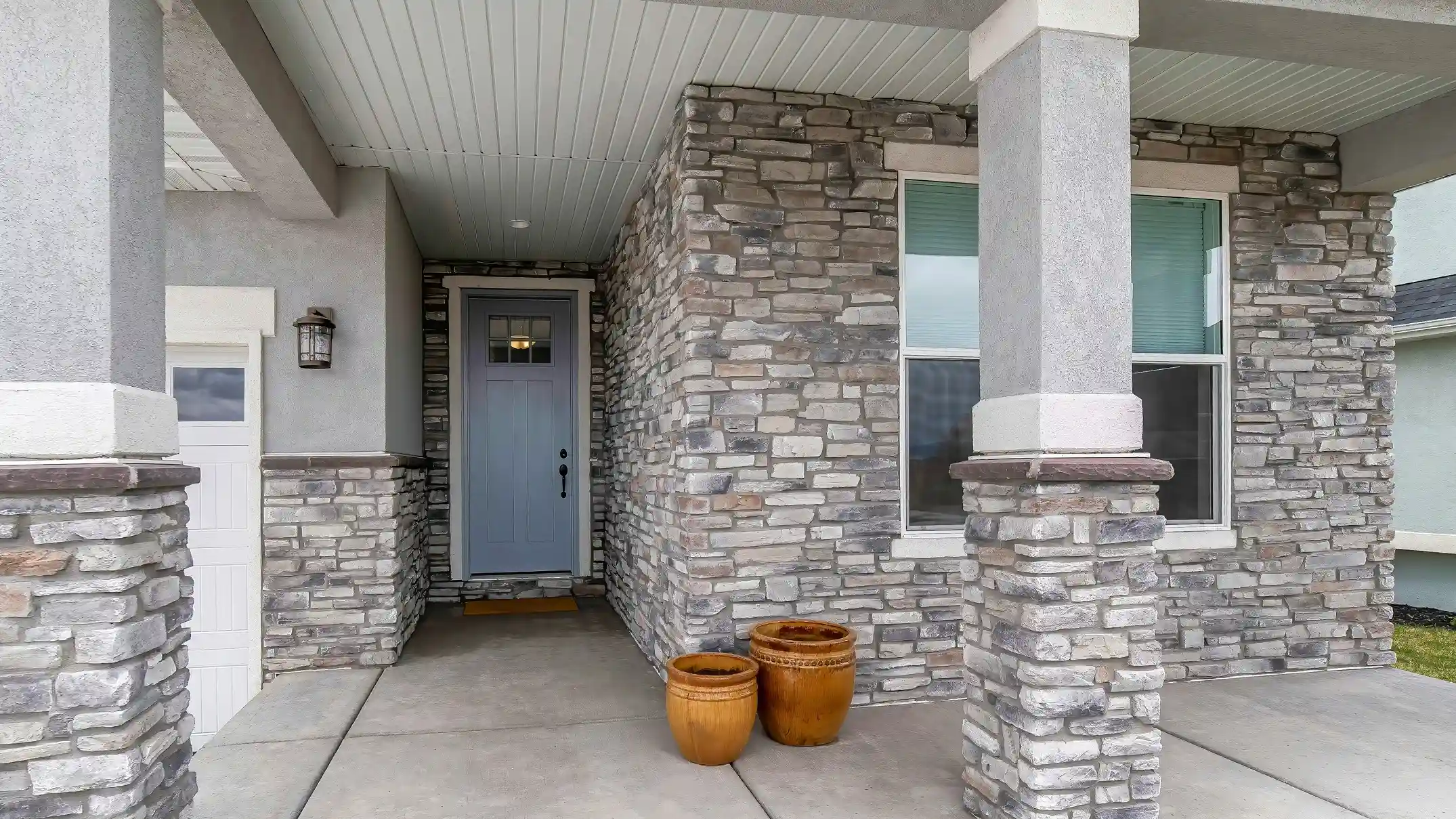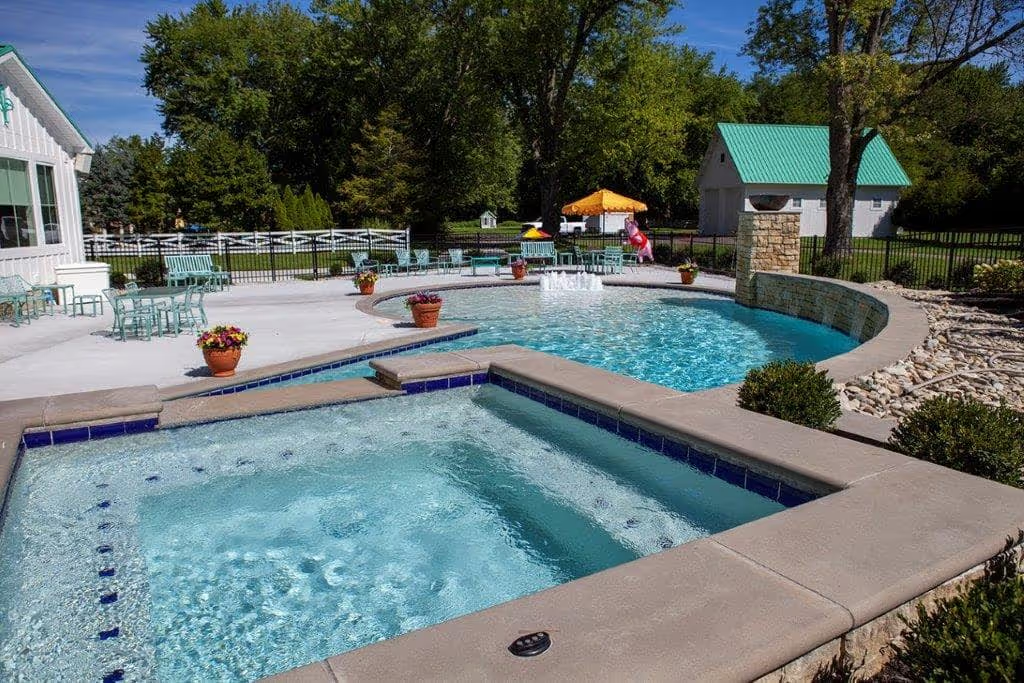- Stone Center
- Blog
Sandstone vs. Limestone: Key Differences
20/2/2024
9/26/2023
Sandstone vs. Limestone: Key Differences

Sandstone and limestone are two popular natural stones used in many architectural and design applications. While both the stones share some similarities, they also have distinct characteristics that set them apart. In this blog post, our experts will explore the key differences between sandstone and limestone, shedding light on their composition, appearance, durability, and usability.
Whether you're considering using limestone pavers for a refined and elegant look or incorporating sandstone for its unique texture and rustic charm, Stone Center in Columbus and Cincinnati is your go-to destination for a wide range of high-quality natural stone options. Let's dive in and discover the unique qualities of both sandstone and limestone and how they can elevate your next project.
What Is Limestone?
Limestone is a type of sedimentary rock that forms from the accumulation of organic debris, such as shells, coral, and algae, or through chemical processes, like the precipitation of calcium carbonate from lake or ocean water. The formation of limestone beds occurs in shallow marine environments such as continental shelves or platforms.
The rock is typically gray, but you can find variations of white, yellow, or brown due to the presence of natural matter or traces of iron or manganese. Limestone's texture can vary, with most limestone beds forming smooth surfaces while others may have a rougher texture. This versatile rock has played a significant role in the development of the Earth's history, with fossils often found embedded within limestone formations. Limestone formations can also lead to the creation of fascinating limestone caves.
What Is Sandstone?
Sandstone is another type of sedimentary rock that's primarily composed of sand-sized particles derived from minerals, rocks, and organic material. It can be found worldwide, with significant deposits in countries such as the United States, South Africa, and Germany. Sandstone's composition is mainly quartz or feldspar, as these minerals are highly resistant to weathering.
It typically forms in areas where sand is deposited and buried, often offshore from river deltas. However, it can also be found in sandy desert dunes and beach environments. While fossils can sometimes be present in sandstone, it's less prevalent compared to limestone. Sandstone comes in a range of colors, including orange, yellow, brown, and red, adding to its visual appeal and versatility in various applications.
What Is the Difference Between Limestone and Sandstone? - Key Differences
Limestone and sandstone are both stylish rocks, but they have key differences in terms of composition, formation, strength, and appearance. Let's explore the distinctions between these two sedimentary rocks.
How Are Limestone and Sandstone Classified?
Limestone and sandstone can be distinguished based on their classification and formation. Limestone is classified as a sedimentary rock that forms from the accumulation of minerals and organic matter in marine environments. It's primarily composed of calcium carbonate and often contains fossils and shell fragments.
Sandstone, also a sedimentary rock, is characterized by its formation from sand-sized grains of minerals and rocks. It can originate from both terrestrial and marine environments. Both sedimentary-type rocks have unique characteristics and applications, so they're valuable resources in construction and design. Understanding their classification helps identify the specific qualities and uses of these stones.
Formation

Limestone and sandstone differ in their formation processes. Limestone formation happens through the accumulation of carbonate precipitation buildup, often from ancient marine environments. It occurs when calcium carbonate in the form of shells, coral, or other organic remains from marine organisms settles and compacts over time.
In contrast, sandstone is formed through the consolidation of sand grains, either from the erosion and transportation of pre-existing rocks or the precipitation of sand in terrestrial or marine environments. The formation of limestone is closely linked to factors such as carbonate saturation, temperature, and carbon dioxide concentration in the water, while sandstone's formation is influenced by factors like erosion, transportation, and deposition.
Composition
Composition is another difference between the two. Limestone and sandstone, though both sedimentary rocks have distinct differences in composition. Limestone is primarily composed of dissolved calcium carbonate, often in the form of calcite. This composition gives limestone its characteristic durability and ability to withstand weathering.
Sandstone, on the other hand, is composed mainly of sand-sized grains of mineral, rock, or organic material. It typically contains quartz and feldspar, along with other minerals. This composition gives sandstone its unique texture and strength. When you have an understanding of the composition of these rocks, you'll be able to better determine their suitability for various applications, such as construction or decorative purposes.
Strength and Durability
Limestone and sandstone have distinct differences in terms of strength and durability. Limestone, as calcite rock, is known for its durability and ability to withstand weathering. It's relatively resistant to damage so it's suitable for various applications, including limestone pavers.
On the other hand, while sandstone is generally strong and durable, it can be more susceptible to damage compared to limestone. Sandstone pavers may require more care to prevent cracking or erosion. Additionally, sandstone is more sensitive to chemical exposure and may be affected by strong acids. As with any natural stone, proper maintenance and protection can help enhance the longevity and resilience of both limestone and sandstone.
Application
Limestone and sandstone are both popular choices when it comes to various applications in construction and design. Limestone is naturally elegant and durable so it's often used for creating stunning stone features such as limestone fireplace surroundings, limestone copings, and limestone pavers. It's a sedimentary rock that offers a wide range of colors and textures, making it versatile for both indoor and outdoor projects.
On the other hand, sandstone, another sedimentary rock, is perfect for rockface cladding. It has distinct textures and warm earthy tones so it's often used to create visually appealing facades and structures. While both limestone and sandstone bring their own charm and characteristics to a project, it ultimately comes down to your personal preference and the specific application requirements. Whether you choose limestone or sandstone, both will add a touch of natural beauty to any design.
The Costs of Sandstone vs. Limestone
Cost is another factor to consider. Even though limestone and sandstone are both sedimentary rocks, they have notable cost differences. Locally available limestone rocks tend to be more cost-effective compared to sandstone, which may require transportation from distant sources. The cost of limestone can vary based on factors such as color, quality, and thickness. Additionally, the cost of limestone can be influenced by the project's complexity and the specific application, such as limestone fireplaces or limestone copings.
Sandstone, on the other hand, typically has a higher price point due to its unique characteristics and the limited availability of certain types. When considering costs, you'll want to consult with suppliers or professionals to receive accurate pricing based on specific project requirements and the desired outcome.
Maintenance

Limestone and sandstone are also different in terms of maintenance. Limestone is more durable and resistant to weathering, so it generally requires less maintenance. Regular cleaning with mild soap and water is often sufficient to keep limestone surfaces looking their best.
Sandstone, however, may require more attention and care. It's more susceptible to staining and discoloration, especially when exposed to acidic substances. You'll need to avoid acid solutions when cleaning sandstone, as they can cause damage. Proper sealing and regular reapplication of sealant can help protect both limestone and sandstone and maintain their longevity and beauty over time. Regular maintenance practices tailored to each stone type will help preserve their aesthetic appeal and structural integrity.
Appearance and Versatility - How to Identify Sandstone vs. Limestone
Limestone is typically gray, but it may also be white, yellow, or brown. Its calcite texture differs from sandstone, and while it may contain carbonated grains, you can usually see fossil fragments if you look closely. Limestone and sandstone have distinct differences in terms of appearance and versatility. Limestone has a smooth texture and consistent patterns that offer a refined and elegant aesthetic. It's often used in polished forms for a sleek and sophisticated look.
Because sandstone contains many layers of rock and sand, its coloring ranges from blue to red, brown, or even green. It also displays a visible stratification into layers, which limestone doesn't have — wondering how to identify sandstone? Like sandpaper, it usually has a coarse, granular texture. When you look closely, you'll be able to see individual sand grains. It's highly versatile and can be used to create both traditional and contemporary designs. Whether you prefer the polished elegance of limestone or the raw beauty of sandstone, both offer unique characteristics that can enhance any architectural or design project.
Discover the Beauty of Sandstone and Limestone
As we've covered, sandstone and limestone offer distinct qualities and characteristics, making them suitable for various applications in construction and design. While limestone exhibits elegance and durability, sandstone boasts raw beauty and a wide range of colors and textures. Understanding the key differences between these sedimentary rocks can help you make the best decision for your project.
Whether you're considering limestone slabs for a refined look or rockface sandstone for a rustic appeal, visit Stone Center's stores in Columbus or Cincinnati to explore a wide selection of high-quality natural stone options. Our team can help you discover the perfect stone for your next project and bring your vision to life with the timeless beauty of limestone slabs or the unique charm of sandstone rocks.
If you can't pay us a visit, you can browse our extensive catalog right on our website!
Don't miss out on the opportunity to create stunning architectural features or breathtaking landscapes with these remarkable stones. Get a quote from Stone Center today!
FAQ
.avif)
Jon, the owner of Stone Center, is a knowledgeable expert in natural stone products, specializing in various types of stone for landscaping and architectural projects. Passionate about promoting the beauty and versatility of natural stone, Jon aims to use these blogs to inspire readers with creative ideas to upgrade their homes.
How much does it cost to get a stone restored?
How much you end up spending to restore stone varies on the type of stone, the technique, and the stone’s current condition. Stone in good condition will cost less to restore, whereas stone that has a lot of wear and tear may require a longer restoration.







.avif)
%20(1).avif)
%20(1).avif)
